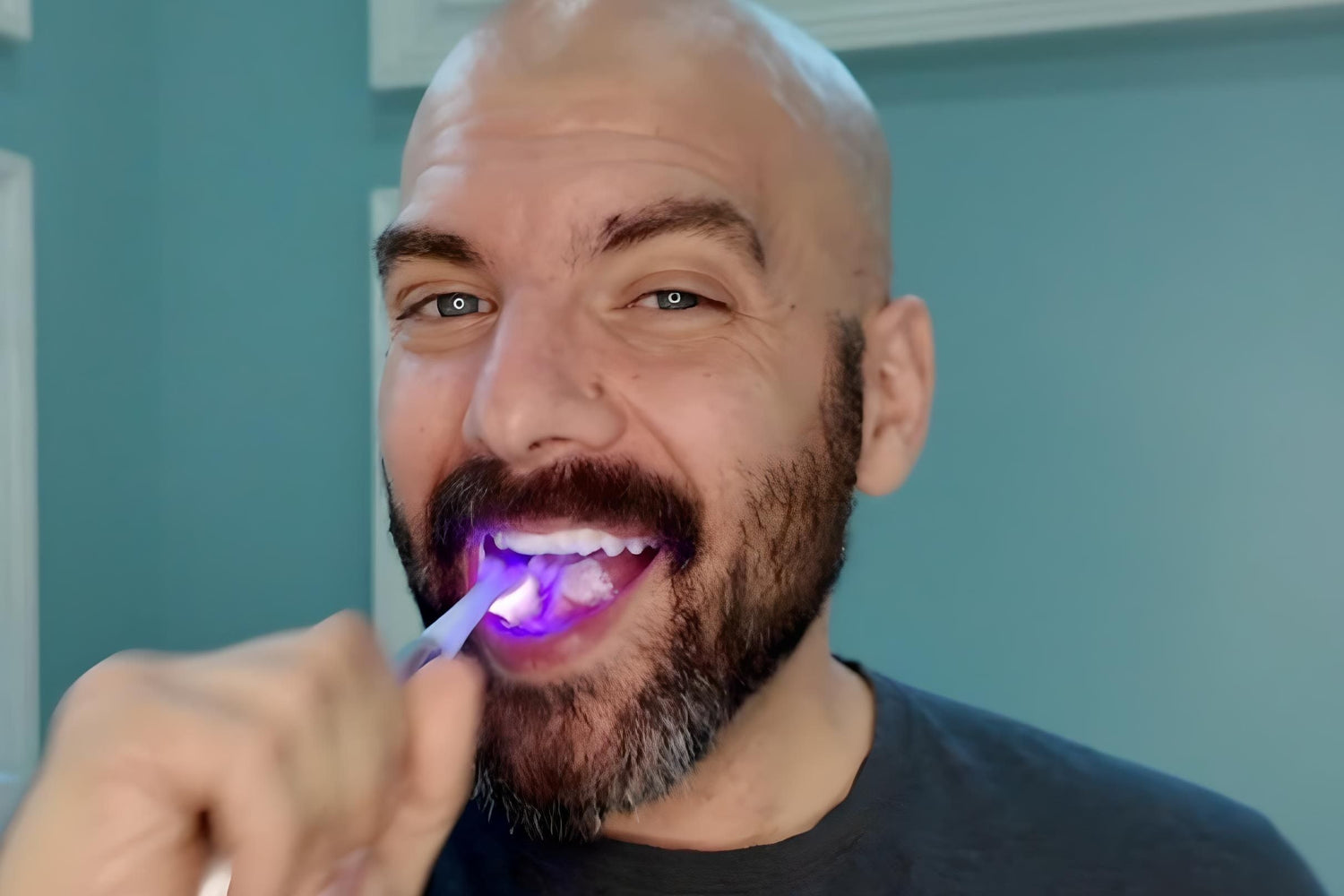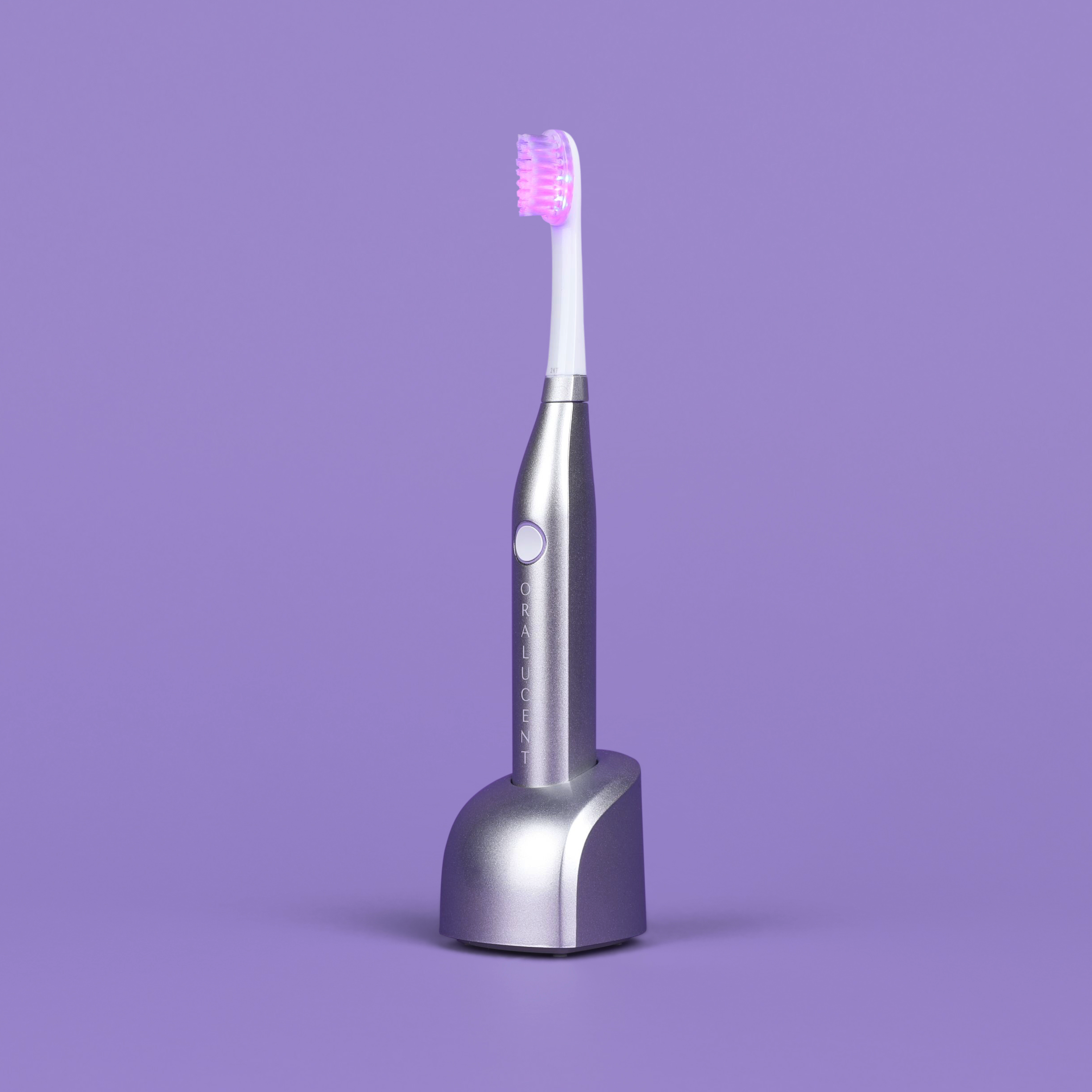He’s been your rock, your guide, your quiet hero. He may not always say much—but you’ve always known he’d be there when it mattered. This Father’s Day, what if you could give him something that doesn’t just say thank you—but helps him live a longer, healthier life?
It turns out, one of the most overlooked—and powerful—ways to support Dad’s wellness starts not in the gym, not in the kitchen, but right in the bathroom mirror: his oral health.
The science is clear: what’s happening in the mouth doesn’t stay in the mouth. In fact, poor oral health—especially when left unchecked—can fuel chronic diseases that impact the heart, brain, immune system, and even longevity. And when it comes to men, the risk is even greater.
Men’s Oral Health: A Silent Crisis
Men are far less likely than women to seek routine dental care. According to the American Dental Association, only 67% of men visited a dentist in the past year compared to 74% of women (ADA, 2020). When dental issues like bleeding gums, sensitive teeth, or plaque buildup are ignored, they don’t just go away—they evolve into something far more dangerous: gum disease. Gum disease left unchecked progresses into periodontal disease which is very expensive and painful to treat.
And that’s where the cascade begins.
The Bacterial Battlefield Beneath the Gumline
Our mouths are home to over 700 species of bacteria. Most are harmless—but when oral hygiene slips, harmful strains like Porphyromonas gingivalis and Treponema denticola flourish. These bacteria are anaerobic, aggressive, and highly inflammatory, triggering the body’s immune system into a constant state of low-grade warfare.
Over time, this chronic inflammation erodes gum tissue and bone—a condition known as periodontitis. But the damage doesn’t stop there. These pathogens and inflammatory markers can enter the bloodstream, affecting distant organs and playing a role in:
- Atherosclerosis (plaque buildup in arteries)
- Insulin resistance and Type 2 diabetes
- Neuroinflammation and cognitive decline
- Increased all-cause mortality
According to the CDC and NIDCR, 56.4% of men aged 30+ already have some form of periodontal disease—compared to just 38.4% of women (NIDCR/CDC, 2012).
Why Men Are More Vulnerable
This disparity isn’t just about behavior. Yes, men are less likely to floss and more likely to skip brushing or rush through it. In fact, only 21% of men floss daily, compared to 27% of women (CDC/NCHS, 2016). But there’s a deeper biological component at play.
Testosterone is believed to suppress parts of the immune system, particularly the inflammatory response needed to fight oral bacteria. This makes it harder for men to naturally fight off infections in the gums—even if they follow similar hygiene routines to women (Genco et al., 1998).
Combine that with inconsistent care, and it’s no wonder harmful bacteria get a foothold—and often go undetected until major damage has occurred.
Poor Oral Health Can Lead to Tooth Loss Which Isn’t Just Cosmetic—It’s a Marker of Accelerated Aging
Tooth loss is often dismissed as a normal part of aging—but research shows it’s far more than a cosmetic issue. In fact, it’s a predictor of declining physical function, cognitive impairment, and reduced life expectancy.
- A longitudinal study in the Journal of the American Geriatrics Society found that older adults with significant tooth loss had a 17% higher mortality risk over a 10-year period—even after adjusting for age, smoking, and chronic conditions (Tsakos et al., 2010).
- Tooth loss is also strongly linked to frailty and malnutrition. Seniors missing multiple teeth are more likely to eat fewer fruits, vegetables, and proteins—leading to poor nutritional status and muscle wasting.
- From a cognitive standpoint, fewer natural teeth are associated with higher rates of dementia, including Alzheimer’s disease. The working theory? Tooth loss often reflects long-term chronic inflammation and bacterial exposure, both of which are risk factors for neurodegeneration (Koyama et al., 2014).
Beyond that, tooth loss impacts confidence, speech, and social engagement—all of which are crucial to mental and emotional well-being in older adults.
The takeaway? Preserving your natural teeth isn’t just about maintaining dad’s smile—it’s about protecting dad’s independence, dad’s nutrition, dad’s brain, and dad’s lifespan.
The Link Between Oral Health and Whole-Body Wellness
Here’s the bottom line: untreated oral inflammation doesn’t just cause tooth loss or bad breath. It places ongoing stress on the body and increases the risk of:
- Cardiovascular disease: Oral bacteria have been found in atherosclerotic plaques in coronary arteries.
- Diabetes: Chronic gum inflammation worsens insulin resistance, and diabetes accelerates periodontal breakdown.
- Alzheimer’s disease: Pathogens like P. gingivalis have been found in the brains of Alzheimer’s patients.
- Respiratory infections: Oral bacteria can be aspirated into the lungs, increasing the risk of pneumonia, especially in older men.
In short, your mouth is a gateway to your overall health. Keeping harmful bacteria in check—and inflammation under control—is one of the smartest things Dad can do to stay healthy and strong.
So, What Can You Do for Dad? Start at Home.
Keep it simple and effective. Daily brushing and flossing form the foundation of oral care—but technique and tools matter more than most people realize.
Here’s how you can help Dad take control of his health, starting with his mouth:
Use the Bass Brushing Method
Rather than scrubbing hard across the teeth, the Bass Method involves holding the brush at a 45° angle to the gumline and using gentle, vibratory strokes to clean just beneath the gums—where dangerous bacteria live. It’s gentler on enamel and far more effective at reducing inflammation.
Floss daily
No toothbrush, no matter how advanced, can clean between the teeth. Daily flossing removes debris and bacteria that fuel gum disease in these hard-to-reach areas.
Schedule and keep oral care appointments
The ADA recommends dental visits and professional cleanings every six months and x-rays every 12-18 months. The best way to ensure these appointments happen is to schedule them and put them on the calendar. These appointments are essential to ensure dad’s oral health and healthful longevity.
Why the Oralucent Pro Edition Is a Game-Changer for Men’s Health
The Oralucent Pro Edition was engineered to do what ordinary toothbrushes can’t: fight harmful bacteria at the source, reduce inflammation, and promote gum healing—right from the comfort of home.
Patented Light Therapy: Clinically Inspired, Home Delivered
- Blue light is believed to have antimicrobial effects, disrupting the DNA of harmful bacteria like P. gingivalis and reducing their ability to replicate.
- Red light has been shown to penetrate the gum tissue, stimulate circulation, accelerate cell repair, and reduce inflammation—a powerful tool for reducing the risk of gum disease.
These aren’t gimmicks. This is similar to kind of photobiomodulation used in dental clinics—integrated seamlessly into your daily routine.
Sonic Vibration for Gumline Precision
The Oralucent Pro uses sonic vibration to amplify plaque removal along the gumline, working in harmony with the Bass technique to clean where disease begins—without harsh abrasion.
Soft Bristles for a Gentle, Yet Effective Cleaning
The Oralucent Pro Edition’s soft bristles are specially designed for dads who may have sensitive gums or early signs of gum disease. As men age, gum tissue becomes more vulnerable to recession and inflammation—often without noticeable symptoms. Hard or medium bristles can cause microtears, aggravate gum sensitivity, and accelerate enamel erosion, especially along the gumline.
Our ultra-soft bristles, when used with the Bass brushing method, gently reach under the gumline to remove plaque without causing trauma. They’re firm enough to clean effectively, yet gentle enough to support healing and reduce irritation. Combined with Oralucent’s light therapy, these bristles help minimize inflammation while encouraging healthy blood flow to the gums.
For dads who value comfort, precision, and long-term wellness, soft bristles aren’t just better—they’re essential.
Engineered for Longevity
Oralucent isn’t just a toothbrush—it’s part of a preventive wellness system. With a 60-day month back guarantee, one-year warranty, replaceable heads, and built-in AI technology that supports gum and oral health, it’s an investment in Dad’s happiness, confidence, and longevity.
This Father’s Day, Help Him Live Healthier—Starting with His Smile
The connection between oral health and chronic disease is undeniable—and it’s one of the few areas where small changes yield massive long-term benefits.
By giving Dad the Oralucent Pro Edition, you’re not just helping him brush better. This simple, single step option will fit into their existing daily routine and yield better results. You’re helping him reduce disease-causing bacteria, control inflammation, and protect the systems that keep him strong, vibrant, and present in your life.
This isn’t just about smiles. It’s about years of life, well-lived.
Bibliography
- American Dental Association (2020). Dental Care Utilization in the U.S. https://www.ada.org/resources/research/health-policy-institute/dental-care-utilization-in-the-us
- National Institute of Dental and Craniofacial Research & CDC (2012). Periodontal Disease in Adults. https://www.nidcr.nih.gov/research/data-statistics/periodontal-disease/adults
- Genco, R. J., Offenbacher, S., & Beck, J. D. (1998). Periodontal disease and systemic disease: Epidemiology and possible mechanisms. Journal of Periodontology, 69(8), 841–850. https://aap.onlinelibrary.wiley.com/doi/abs/10.1902/jop.1998.69.8.841
- American Dental Association (2013). Oral Health and Wellness Topics. https://www.ada.org/resources/research/science-and-research-institute/oral-health-topics/oral-health-and-wellness
- Centers for Disease Control and Prevention, National Center for Health Statistics (2016). Data Brief No. 197: Oral Hygiene Behaviors. https://www.cdc.gov/nchs/products/databriefs/db197.htm
- Olsen, I., & Singhrao, S. K. (2015). Can oral infection be a risk factor for Alzheimer’s disease? Journal of Oral Microbiology, 7(1).
- Hajishengallis, G. (2015). Periodontitis: from microbial immune subversion to systemic inflammation. Nature Reviews Immunology, 15(1), 30–44.







